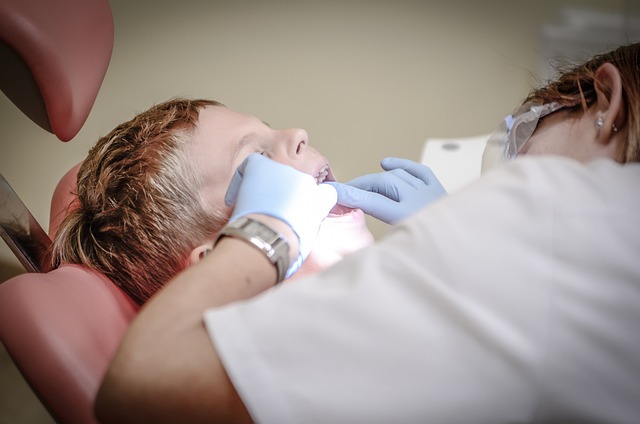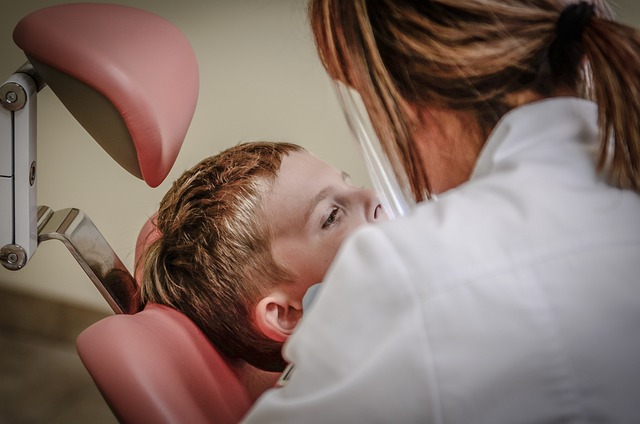Mouthwash After Tooth Extraction: Discover the Dos and Don’ts
Hey there, looking for some guidance on mouthwash after a tooth extraction? Don’t worry, we’ve got you covered! After undergoing such a procedure, it’s normal to have questions about the dos and don’ts of dental care. That’s why we’ve put together this informative article to provide you with all the essential information you need. With our friendly tone and expert advice, you’ll soon be equipped with the knowledge to make the right choices when it comes to using mouthwash after your tooth extraction. So, let’s dive in and discover the do’s and don’ts together!
1. The Importance of Mouthwash After Tooth Extraction: Promote Healing and Reduce Infections
After undergoing a tooth extraction, it is crucial to properly care for your mouth to ensure a smooth and speedy recovery. One effective way to promote healing and reduce the risk of infections is by incorporating mouthwash into your post-extraction routine. Mouthwash can play a vital role in maintaining oral hygiene during this delicate phase. Here’s why:
1. Prevents bacterial growth:
- Mouthwash contains antibacterial properties that help kill bacteria in your mouth.
- By rinsing with mouthwash, you can greatly reduce the risk of developing an infection in the extraction site.
- Regular use of mouthwash can keep harmful bacteria at bay and minimize the chances of complications.
2. Soothes the gums:
- Mouthwash can provide a soothing effect on your gums, which may be sore or sensitive following the extraction.
- Using an alcohol-free mouthwash with natural ingredients, such as chamomile or aloe vera, can provide gentle relief and comfort.
- Make sure to follow the instructions on the mouthwash bottle for the appropriate rinsing time and frequency.
By incorporating mouthwash into your post-tooth extraction routine, you can take proactive steps to promote healing, maintain good oral hygiene, and reduce the likelihood of complications or infections. Remember to consult your dentist for personalized advice and guidance specific to your extraction and overall oral health.

2. Understanding the Dos and Don’ts of Using Mouthwash Post Tooth Extraction
After a tooth extraction, it’s essential to maintain proper oral hygiene to prevent infection and promote healing. Mouthwash can be a beneficial addition to your dental care routine during this time. However, it’s crucial to understand the dos and don’ts of using mouthwash post tooth extraction to ensure you’re using it correctly and safely.
Dos:
- Choose an alcohol-free mouthwash: Alcohol-based mouthwashes can irritate the extraction site, causing discomfort and delaying healing. Opt for an alcohol-free mouthwash to ensure a gentle and soothing experience.
- Follow the instructions: Always read and follow the instructions provided with the mouthwash carefully. This ensures you’re using the correct amount and following any specific usage guidelines.
- Gentle rinsing is key: After 24 hours of your tooth extraction, start rinsing your mouth with a gentle mouthwash. Take a small sip, swish it around your mouth, and then spit it out. Avoid aggressive rinsing, as it may disturb the blood clot forming in the extraction site.
Don’ts:
- Avoid using mouthwash immediately: It’s crucial to wait at least 24 hours before using mouthwash after a tooth extraction. Using it too soon could dislodge the blood clot and lead to a painful condition called dry socket.
- Refrain from spitting forcefully: After rinsing with mouthwash, do not spit forcefully. Gentle spitting is enough to remove the mouthwash from your mouth. Forceful spitting can disturb the blood clot and hinder healing.
- Do not use mouthwash that contains hydrogen peroxide: While hydrogen peroxide mouthwashes may have antibacterial properties, it can be harsh on the extraction site and slow down the healing process. Stick to a gentle, non-hydrogen peroxide mouthwash for the time being.
Remember, consulting your dentist is always a good idea when it comes to post-tooth extraction care, including the use of mouthwash. They can provide personalized advice based on your specific situation to ensure a smooth recovery.
3. Step-by-Step Guide: How to Use Mouthwash Safely and Effectively After a Tooth Extraction
Using mouthwash after a tooth extraction is an essential part of the healing process. Follow these simple steps to ensure you use mouthwash safely and effectively:
- Choose the right mouthwash: Look for an alcohol-free mouthwash that contains fluoride. Alcohol can irritate the extraction site and delay healing. Fluoride helps to prevent cavities and promotes oral health.
- Wait for the right time: It’s important to wait at least 24 hours before using mouthwash after a tooth extraction. This allows for blood clot formation and reduces the risk of dislodging the clot.
- Mix mouthwash with water: Dilute the mouthwash with an equal amount of water to make it gentler on the extraction site. Swish the mixture for 30 seconds, making sure it reaches all areas of your mouth.
- Spit gently: Avoid vigorous spitting as it can dislodge the blood clot and hinder the healing process. Instead, lean over a sink and let the mouthwash drain out slowly without forcefully spitting.
- Repeat the process: Use mouthwash after meals or at least twice a day, as recommended by your dentist. This helps remove bacteria and keeps your mouth clean while promoting optimum healing.
By following these steps, you can make sure that using mouthwash after a tooth extraction is both safe and effective. Remember to consult your dentist if you experience any unusual symptoms or have concerns about your oral health.

4. Exploring the Benefits of Mouthwash in the Healing Process of Tooth Extraction
Mouthwash can play a crucial role in the healing process after a tooth extraction. Not only does it provide additional cleanliness for the mouth, but it can also help to prevent infection and promote faster healing. Here are some of the benefits of using mouthwash during the recovery period:
- Reduces bacteria: Mouthwash contains active ingredients such as antiseptics and antibacterial agents that help kill the bacteria in the mouth, reducing the risk of infection at the extraction site.
- Improves oral hygiene: Brushing and flossing around the extraction site can be challenging at first. Rinsing with mouthwash can effectively clean the area, removing food particles and debris to maintain good oral hygiene.
- Relieves discomfort: Certain types of mouthwash have ingredients like menthol or eucalyptus, which provide a soothing and cooling sensation. This can help alleviate any discomfort or soreness that may occur in the days following the extraction.
It’s important to ensure you choose the right mouthwash for your needs. Look for one that is alcohol-free, as alcohol-based mouthwashes can sometimes cause a stinging or burning sensation, which may be unpleasant during the healing process. Additionally, if your dentist has prescribed a specific mouthwash, be sure to follow their instructions and use it as directed.
Incorporating mouthwash into your oral care routine after a tooth extraction can significantly contribute to a healthy recovery. It’s important to consult with your dentist or oral surgeon to determine the best mouthwash and oral care schedule for your specific case. By maintaining good oral hygiene and following proper aftercare recommendations, you can help ensure a smoother healing process and minimize any potential complications.

5. Common Mistakes to Avoid When Using Mouthwash After Tooth Extraction
When it comes to using mouthwash after a tooth extraction, there are a few common mistakes that you’ll want to avoid. These mistakes can hinder the healing process and potentially cause further discomfort. So, keep these tips in mind to ensure a smooth recovery:
1. Rinsing too vigorously: While it’s important to keep your mouth clean, be gentle when rinsing with mouthwash. Avoid swishing the liquid forcefully as it can dislodge the blood clot and disrupt the healing process. Instead, gently swish the mouthwash around for about 30 seconds and then spit it out.
2. Using mouthwash too soon: It’s crucial to wait at least 24 hours after your tooth extraction before using mouthwash. This allows the blood clot to properly form and protects the extraction site from infection. Using mouthwash too soon can interfere with clot formation and increase the risk of developing dry socket.
6. Choosing the Right Mouthwash: Tips for Selecting the Ideal Oral Rinse after a Dental Procedure
After undergoing a dental procedure, it’s important to select the right mouthwash to promote proper healing and maintain optimal oral health. Here are some helpful tips to guide you in choosing the ideal oral rinse:
- Consult your dentist: Before selecting a mouthwash, consult your dentist to ensure it is suitable for your specific dental needs. They can provide recommendations based on the type of procedure you underwent and any particular requirements you may have.
- Look for antibacterial properties: Opt for a mouthwash that has antibacterial properties. This helps in preventing infections and reducing plaque formation.
- Choose alcohol-free options: If you have a sensitive mouth or dryness, it’s advisable to select an alcohol-free mouthwash. This will prevent any discomfort or irritation.
- Consider fluoride content: Fluoride is beneficial for strengthening tooth enamel and preventing tooth decay. Ensure your chosen mouthwash contains fluoride, especially if you have a higher risk of cavities.
Remember, selecting the right mouthwash can greatly contribute to your oral hygiene and recovery after a dental procedure. By following these tips and taking your specific needs into account, you can find the ideal oral rinse that suits you best and helps you maintain a healthy and vibrant smile.
7. Uncover the Myths: Debunking Misconceptions about Mouthwash and Post-Tooth Extraction Care
When it comes to mouthwash and post-tooth extraction care, there are many myths and misconceptions that can lead to confusion. It’s important to debunk these misconceptions and separate fact from fiction. Here are some common myths about mouthwash and post-tooth extraction care, along with the truth:
Myth 1: Mouthwash is a substitute for brushing and flossing.
- Truth: Mouthwash should never replace regular brushing and flossing. While mouthwash can freshen breath and help kill bacteria, it cannot remove plaque or food particles from your teeth and gums.
Myth 2: Using mouthwash after tooth extraction can prevent infection.
- Truth: While mouthwash can help reduce the number of bacteria in your mouth, it cannot prevent infection on its own. It’s important to follow your dentist’s instructions for post-tooth extraction care, which may include rinsing with a saltwater solution or using a prescribed mouthwash.
- Truth: It’s also crucial to maintain good oral hygiene practices, such as gently brushing the remaining teeth and avoiding vigorous rinsing or spitting in the first 24 hours after extraction to prevent dislodging the blood clot.
By understanding the truth behind these misconceptions, you can take proper care of your mouth after tooth extraction and make informed choices about using mouthwash as part of your oral hygiene routine.
8. Expert Advice: Dentist’s Recommendations for Using Mouthwash after Tooth Extraction
After a tooth extraction, using mouthwash correctly can greatly aid in the healing process and maintaining good oral hygiene. Follow these expert recommendations from dentists to get the most out of incorporating mouthwash into your post-extraction routine:
Wait for the Right Time: Avoid using mouthwash for at least 24 hours after your tooth extraction to allow the blood clot to form and prevent it from dislodging. Once this period has passed, incorporate mouthwash into your oral care routine as directed by your dentist.
Choose the Right Mouthwash: Opt for an alcohol-free mouthwash to avoid irritation and dryness in the mouth, which can hinder the healing process. Additionally, select a mouthwash with antimicrobial properties to help reduce the risk of infection. Consult with your dentist to find a suitable mouthwash that caters to your specific needs.
9. Frequently Asked Questions: Clarifying Your Doubts about Mouthwash and Recovery after Tooth Extraction
Q: Can I use mouthwash after getting a tooth extracted?
Yes, you can use mouthwash after a tooth extraction, but it’s important to follow your dentist’s instructions. It’s generally recommended to wait 24 hours after the extraction before beginning to rinse your mouth with mouthwash. Be sure to choose an alcohol-free mouthwash, as alcohol can irritate the extraction site and delay the healing process. Gently swish a small amount of mouthwash in your mouth for about 30 seconds, then spit it out. Avoid gargling forcefully or using a mouthwash that contains any harsh ingredients. If you have questions or concerns about using mouthwash, consult your dentist for personalized advice.
Q: How long does it take to recover after a tooth extraction?
The recovery time after a tooth extraction can vary depending on various factors, such as the complexity of the extraction and your overall oral health. On average, it takes about 7 to 10 days to fully recover from a tooth extraction. However, it’s important to note that everyone heals at their own pace. To promote a smooth recovery, it’s crucial to follow your dentist’s aftercare instructions. This may include avoiding strenuous activities, eating soft foods, and practicing good oral hygiene. If you experience excessive bleeding, severe pain, or any other concerning symptoms, reach out to your dentist for further guidance.
10. Long-Term Oral Health: Maintaining Proper Dental Hygiene beyond Mouthwash Use after Tooth Extraction
After a tooth extraction, maintaining proper dental hygiene is crucial for long-term oral health. While mouthwash can be a useful tool in your dental care routine, it should not be the only step you take. Here are some additional tips to ensure you maintain good oral health:
1. Brush your teeth thoroughly: Make sure to brush your teeth at least twice a day using a soft-bristled toothbrush. Pay special attention to the area surrounding the extraction site, but be gentle to avoid causing any pain or discomfort.
2. Use saltwater rinses: Mix half a teaspoon of salt in 8 ounces of warm water and gently swish it around your mouth. This helps to keep the extraction site clean and promotes healing.
3. Follow a soft food diet: Stick to soft, easy-to-chew foods for the first few days after the extraction. This will prevent any damage to the healing socket and allow for a faster recovery.
4. Avoid smoking and alcohol: Refrain from smoking and consuming alcohol for at least 48 hours as they can delay the healing process and increase the risk of complications.
5. Attend regular dental check-ups: Make sure to visit your dentist regularly for check-ups and professional cleanings. This will help detect any potential issues early on and ensure your oral health is in optimal condition.
By following these tips, you can maintain proper dental hygiene beyond mouthwash use after a tooth extraction. Remember, taking care of your oral health is a vital part of overall well-being, so prioritize your dental care routine for a healthy smile that lasts a lifetime.
Frequently Asked Questions
Q: Why is mouthwash important after a tooth extraction?
A: Mouthwash is important after a tooth extraction because it helps keep the surgical area clean, reduces the risk of infection, and promotes healing.
Q: Can I use any mouthwash after a tooth extraction?
A: It’s best to use a non-alcoholic, antimicrobial mouthwash recommended by your dentist. Alcohol-based mouthwashes can cause irritation to the surgical site and delay the healing process.
Q: How soon after a tooth extraction can I start using mouthwash?
A: You should wait at least 24 hours after the extraction before you start using mouthwash. This allows the blood clot to form properly and reduces the chances of dislodging it.
Q: How often should I use mouthwash after a tooth extraction?
A: It is usually recommended to use mouthwash after meals and before bedtime. However, make sure to follow your dentist’s specific instructions, as they may vary depending on your individual case.
Q: What is the proper technique for using mouthwash after a tooth extraction?
A: Pour the recommended amount of mouthwash into a cup and swish it gently in your mouth for about 30 seconds. Do not rinse or spit forcefully, as this can dislodge the blood clot and hinder the healing process.
Q: What should I do if the mouthwash stings or causes discomfort?
A: If the mouthwash causes discomfort or stinging, you should dilute it with water or switch to a different brand. It’s always a good idea to consult your dentist if you experience prolonged discomfort.
Q: Are there any specific mouthwash ingredients I should avoid after a tooth extraction?
A: Yes, you should avoid mouthwashes that contain alcohol, hydrogen peroxide, or strong menthol flavors, as they can cause irritation to the surgical site and delay healing.
Q: When can I resume my regular oral hygiene routine after a tooth extraction?
A: You can resume brushing your teeth gently, avoiding the surgical area, after 24 hours. Flossing should be resumed after about a week or as advised by your dentist. Be sure to follow their specific instructions.
Q: Are there any activities I should avoid after using mouthwash post-extraction?
A: After using mouthwash, avoid vigorous rinsing, spitting forcefully, smoking, or using straws for the first few days to prevent dislodging the blood clot and promoting proper healing.
Q: How long should I continue using mouthwash after a tooth extraction?
A: You should continue using mouthwash for as long as your dentist recommends it. Usually, this is around one to two weeks, but it may vary depending on your individual healing process. Be sure to follow their instructions for the best results.
Conclusion
In conclusion, proper oral care after tooth extraction plays a crucial role in ensuring a smooth and speedy recovery. Using mouthwash can be an effective way to maintain oral hygiene and prevent infections, but it’s essential to follow the dos and don’ts to avoid any complications. Remember to consult your dentist about the right type of mouthwash for you, and always adhere to their instructions. Incorporating gentle rinsing into your post-extraction routine, while being cautious not to disturb the healing site, will help keep your mouth fresh and clean. By following these guidelines and taking good care of your oral health, you’ll soon be on your way to a healthier and happier smile!






